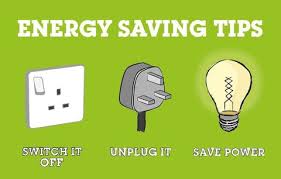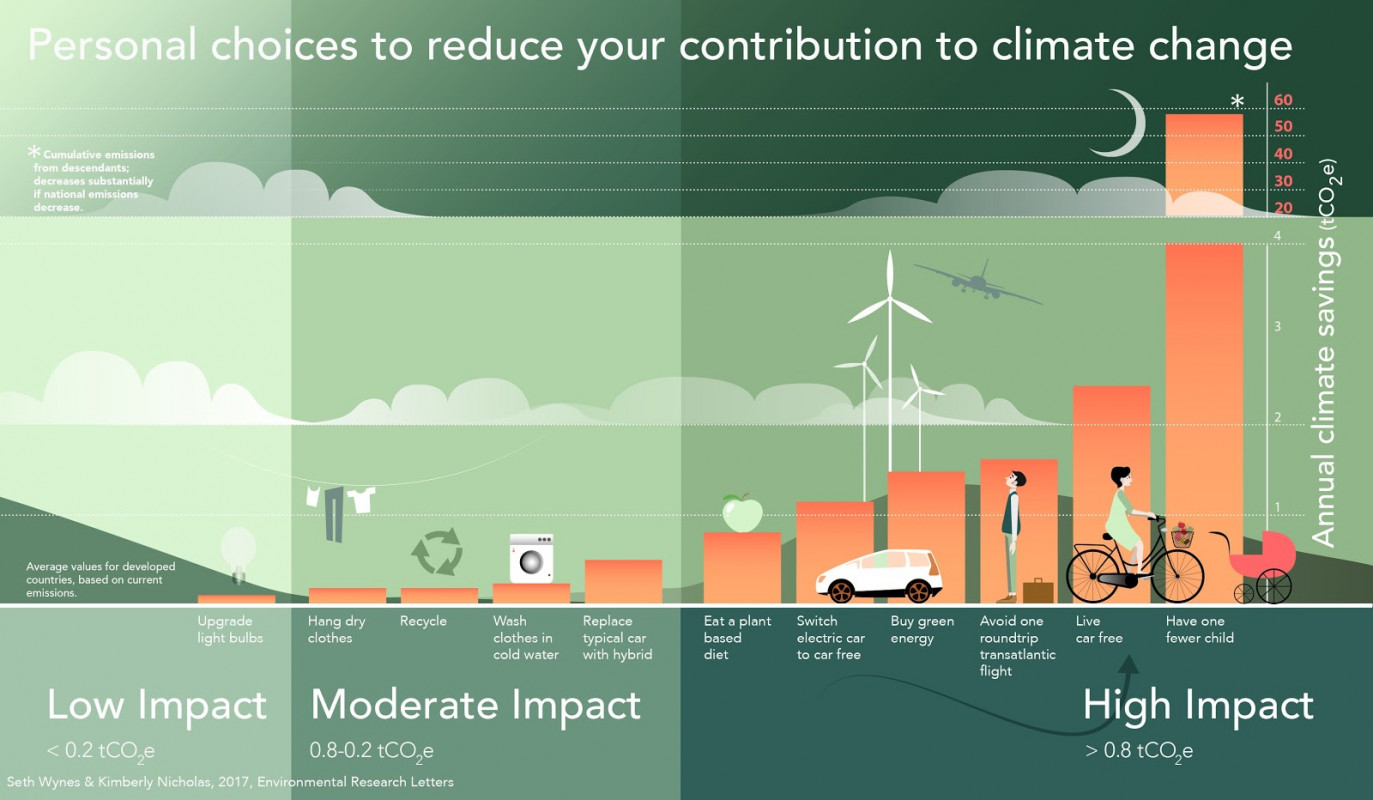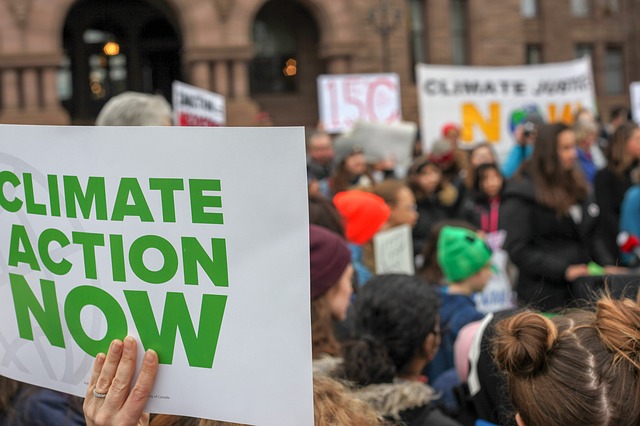
In this section, you’ll read about the many actions you can take at home and in your daily life to reduce your carbon footprint.
First, let’s go over some short and simple changes that you can easily implement at home today!
Reduce, Reuse, Recycle! Reduce the need to upgrade your phone or to buy new clothes because they are trendy. Reduce waste and only take what you can eat. Reuse the pasta sauce bottles to store food. Repair the broken bicycle. Recycle, donate, or sell what you don’t need.
Change your thermostat settings. Usually, the energy used to power your home comes from fossil fuels. When you’re not at home, lower your thermostat. This can save you almost 10% per year on utility bills! This will also make your home energy efficient.
Switch to LED light bulbs. Instead of using traditional bulbs, make the switch to LED bulbs. LEDs use 75% less energy than traditional bulbs, emit very little heat, and last up to 25 times longer!

Unplug unused chargers and plugs. Did you know that chargers consume energy when they are left plugged in after your device is disconnected?
Use less water! You can conserve water in your home by turning off the tap when brushing your teeth, taking showers instead of baths, and doing your laundry only when you have a full load. You can also use gray water (lightly used water) to water your plants.
Change how you use appliances. Try to avoid doing your laundry in hot water. Around 80-90% of the energy consumed by your washing machine is used to heat water. Use cold water instead and hang dry your clothes. Instead of hand washing your dishes, use your dishwasher with a full load to save water. Don’t forget to push the “Economy” button if there is one!

Limit transportation. Walk or bike to school, or carpool if you have to drive at all. Transportation is a major contributor to greenhouse emissions, so do your best to set limits!
Here are some long-term changes you can make with you and your family’s lifestyle:
Use greener transportation. Switch to electric or hybrid cars, use public transportation more often, and take fewer flights each year.
Use renewable energy to power your home. Install solar panels! In one year you can eliminate the carbon emissions made from burning 5,000 pounds of coal. If you can’t install solar panels, choose a utility company that has been certified by Green-e Energy. These companies must meet high environmental standards and supply some of their power through renewable energy sources.
Consume less meat. The livestock industry accounts for almost 14.5% of global greenhouse gas emissions. Try to purchase less meat and switch to pescetarian, vegetarian or vegan options. There are so many great food options out there, get creative!

Insulate your home thoroughly. Seal drafts in your windows (sealing your windows to make sure cold air doesn’t come in) to reduce the use of heaters. Try to use as little energy to heat and cool your home as possible.
Purchase Energy Star appliances. Energy Star appliances are certified by the United States Environmental Protection Agency (EPA) and meet high standards of energy efficiency. A building powered by Energy Star appliances saves around 35% in greenhouse gas emissions. You can buy Energy Star certified light bulbs, air conditioners, refrigerators, washing machines, dryers, dishwashers, heat pumps, and so many more!
Educate others! Join local advocacy groups like the Sunrise Movement, write to your congress representative, and support candidates who support climate change policies. Be a smart consumer who buys green products and supports green companies!
Summary
- Make personal changes today. Practice the 3Rs, walk or cycle more, unplug unused chargers, use less water.
- In the longer term, changing to sustainable diets, renewable energy sources, and greener transportation can reduce your carbon footprint.
- Finally, educate others about climate change, participate in advocacy groups, and contact your elected representatives to have your voice heard.

In this section, you’ll read about the many actions you can take at home and in your daily life to reduce your carbon footprint.
First, let’s go over some short and simple changes that you can easily implement at home today!
Reduce, Reuse, Recycle! Reduce the need to upgrade your phone or to buy clothes because they are trendy (fast fashion). Reduce wastage (only take what you can eat). Reuse the pasta sauce bottles for storage. Repair the broken bicycle. Recycle, donate, or sell what you don’t need.
Change your thermostat settings. In most cases, the energy used to power your home comes from the burning of fossil fuels. When you’re not at home, set the temperature to your house to around 7° to 10°F hotter in summer or cooler in winter than its normal setting. This can save you almost 10% per year on utility bills while making your home energy efficient.
Switch to LED light bulbs. LEDs use 75% less energy, emit very little heat, and last up to 25 times longer than traditional bulbs.

Unplug unused chargers and plugs. Did you know that chargers consume energy when they are left plugged into an outlet after your phone or device is disconnected? And if your device is fully charged and still plugged in, even more energy is consumed.
Use less water! Saving water means that less energy is invested in pumping and transporting water, which reduces greenhouse gas emissions. You can conserve water in your home by turning off the tap when brushing your teeth, taking showers instead of baths, and doing your laundry only when you have a full load. You can also use gray water (lightly used water) to water your plants.
Change how you use appliances. Try to avoid doing your laundry in hot water: around 80-90% of the energy consumed by your washing machine is used to heat water. Use cold water instead and hang dry your clothes. And instead of hand washing your dishes, use your dishwasher with a full load to save water.
Limit transportation. Walk or bike to school, or carpool if you have to. Transportation is a major contributor to greenhouse emissions, so do your best to set limits.

Here are some long-term changes you can make with you and your family’s lifestyle:
Use greener transportation. Switch to electric or hybrid cars, use public transportation more often, and take fewer flights each year (taking one less long-distance flight per year could save 1.68 tons of CO2 equivalent per person).
Use renewable energy to power your home - Install solar panels! In one year with solar panels, you can eliminate the carbon emissions produced from burning 5,000 pounds of coal. If you can’t install solar panels, choose a utility company that has been certified by Green-e Energy. These companies must meet high environmental standards and supply some of their power through renewable energy sources.

Consume less meat. The livestock industry accounts for almost 14.5% of global greenhouse gas emissions. Try to purchase less meat and switch to pescetarian, vegetarian or vegan options.
Insulate your home thoroughly. Seal drafts in your windows (sealing your windows to make sure cold air doesn’t come in) to reduce the use of heaters. Try to use as little energy to heat and cool your home as possible.
Purchase Energy Star appliances. Energy Star appliances are certified by the United States Environmental Protection Agency (EPA) and meet high standards of energy efficiency. A building powered by Energy Star appliances saves around 35% in greenhouse gas emissions. You can purchase Energy Star certified light bulbs, air conditioners, refrigerators, washing machines, dryers, dishwashers, heat pumps, and so many more!
Educate others. Join local advocacy groups, write to your congress representative, and support candidates who support climate change policies. Be a smart consumer who buys green products and supports green companies!
